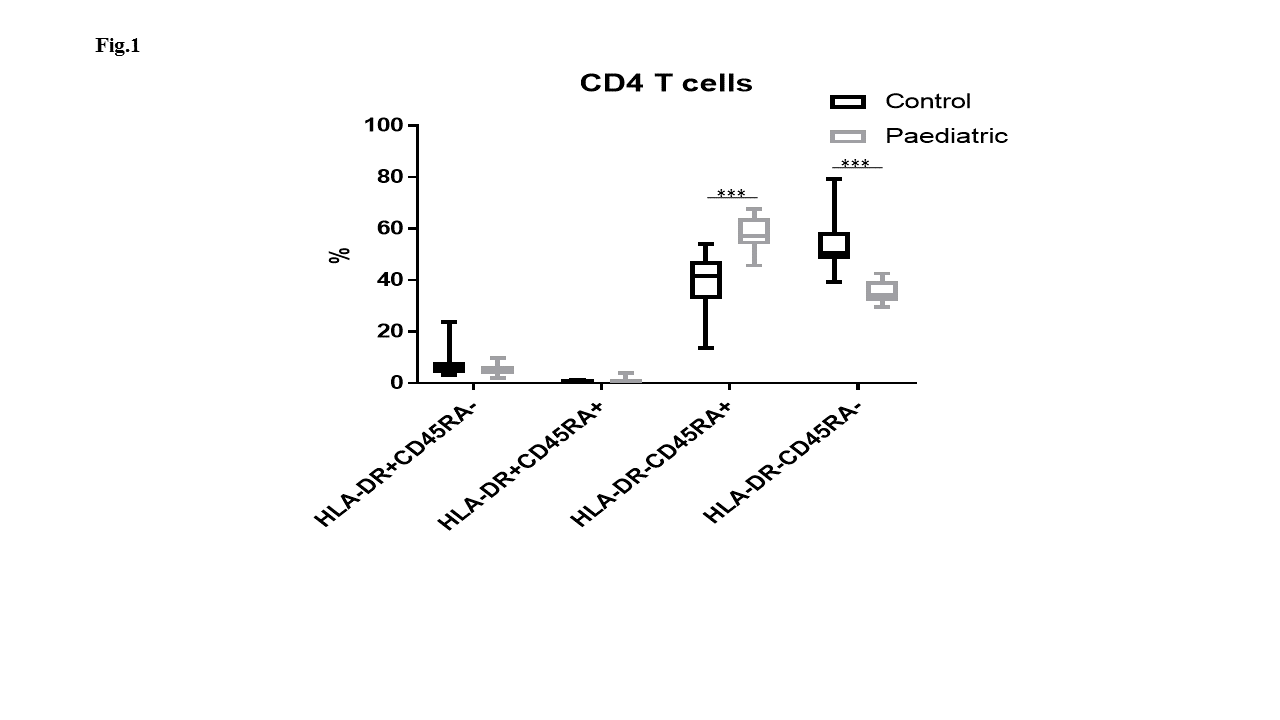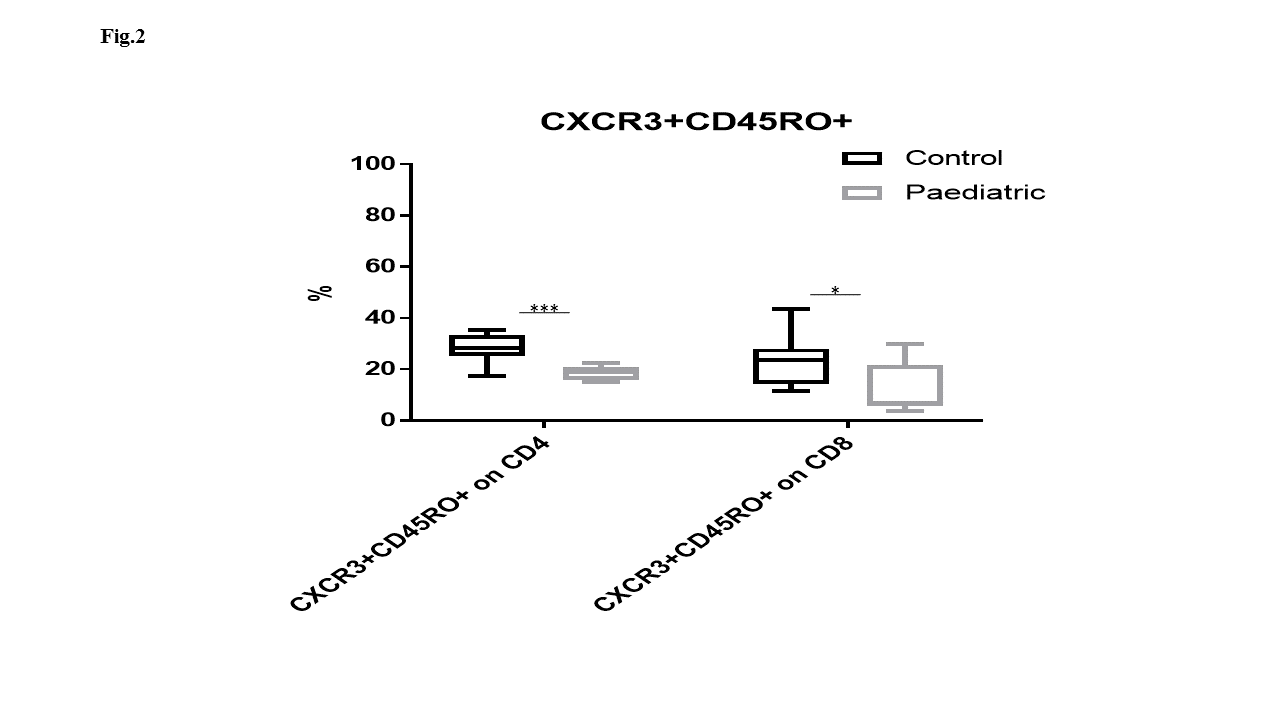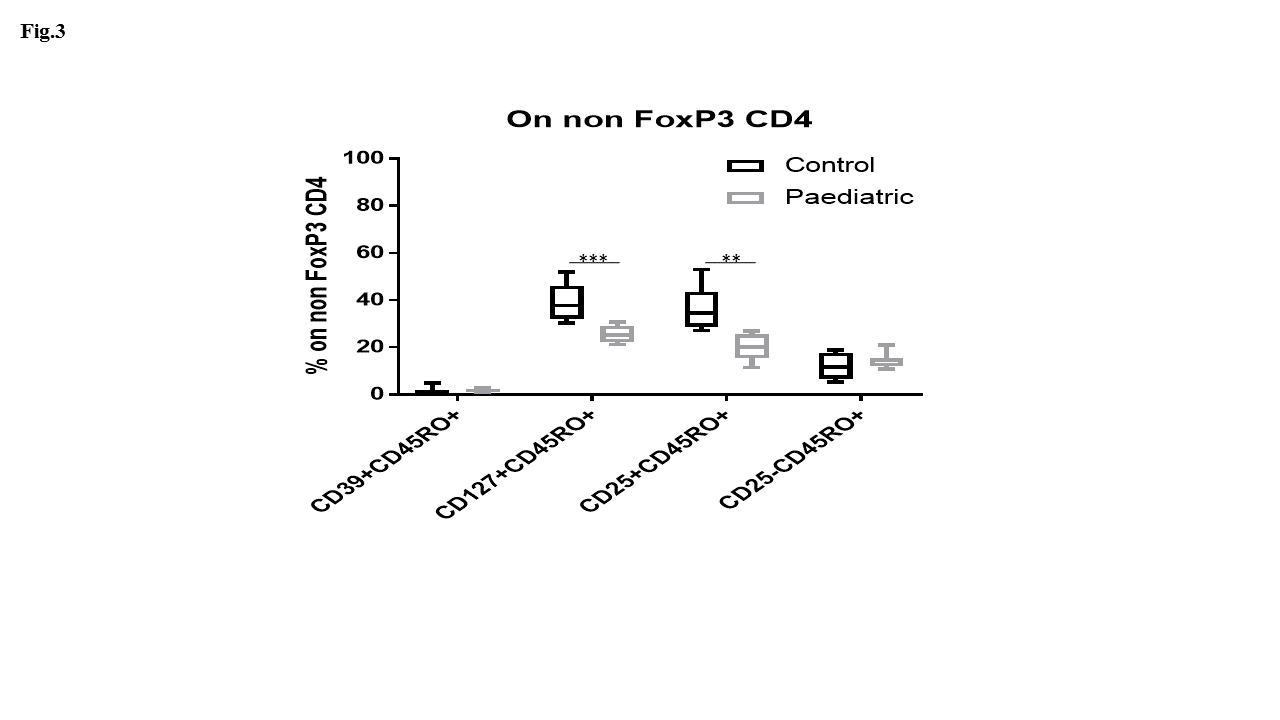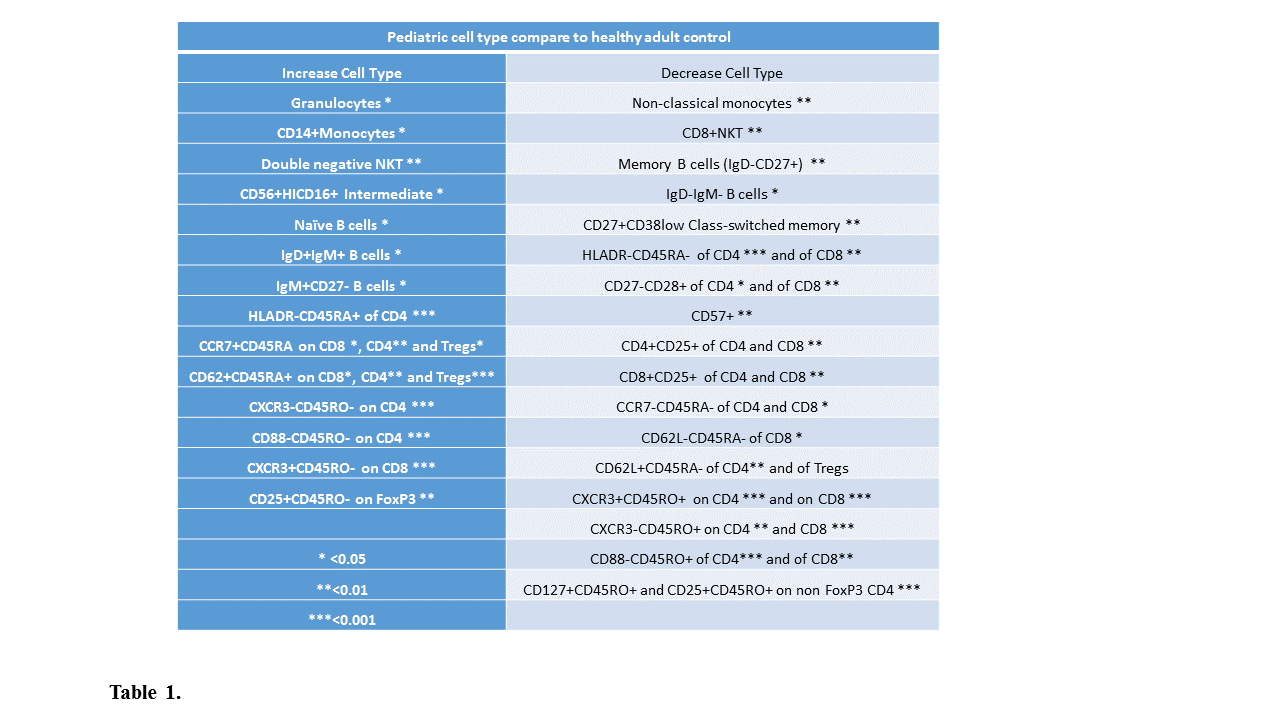Immune Phenotype by Flow Cytometry of Paediatric Kidney Transplant Recipients and Healthy Adult Controls
Elvira Jimenez Vera1, Min Hu1, Yi Vee Chew1, Heather Burns1, Patricia Anderson1, Lindy Williams1, Suat Dervish2, Xin Maggie Wang2, Shounan Yi1, Wayne Hawthorne1, Stephen Alexander3, Philip O'Connell1.
1Centre for Transplant and Renal Research, Westmead Hospital, Westmead Institute for Medical Research, Westmead, Australia; 2Flow Cytometry Core Facility, Westmead Institute for Medical Research, Westmead, Australia; 3Centre for Kidney Research, Children's Hospital at Westmead, University of Sydney, Westmead, Australia
Introduction: The proportion of immune cell subsets in paediatric kidney transplant recipients could help monitor the best approach to allow tolerance to renal allografts. Aim: To determine / establish the differences in the immunophenotype of pediatric kidney transplant recipients and healthy adult controls.
Methods: Absolute cell count (TruCount) and seven leukocyte-profiling panels containing 8-10 marker-antigens (46 of which were unique within the panels) consisting of Tregs, NKT, B, NK, DCs, and monocyte subsets were used to monitor the immune profiles of 9 paediatric kidney transplant and 8 adult control samples. Whole-blood samples, 100-300µl/panel, were stained and acquired on a BD-LSRFortessa and Flowjo was used for data analysis.
Results: Differences in subpopulations between pediatric and healthy adult control can be seen in Table 1. This showed a significant increase in absolute numbers of Granulocytes, CD14+Monocytes, double negative NKT cells and CD56+HICD16+ Intermediate NK cells. B cell panel showed a significant increase in naïve B cells, IgD+IgM+ B cells, and IgM+CD27- B cells. The naïve CD4+ (CD45RA+CCR7+/CD62+) and naïve CD8+ (CD45RA+CCR7+/CD62+) T cells, and naïve Tregs (CD4+CD25+hiCD127lowCD45RA+CCR7+/CD62+ and CD4+FOXP3+CD45RO-) which were higher than in adult controls. Moreover, naïve Foxp3 Tregs in pediatric transplanted patients had higher CD25 expression than naive Tregs in adult controls. Memory CD4+ T cells (CD45RA-CD4+) in pediatric patients has a similar HLA-DR expression as adult controls (Fig. 1).Further we found a significant decrease in the following cell populations in our pediatric kidney transplant patients compare to healthy adult controls: Non-classical monocytes, CD8+NKT, memory B cells (IgD-CD27+), IgD-IgM- B cells, CD27+CD38low Class-switched memory. A decreased proportion in CD27-CD28+, CD25+ of CD4+, CD57+CD27-CD28+ and CD25+ of CD8, CCR7-/CD62L-CD45RA- of CD4 and CD8, and CXCR3+CD45RO+ of CD4 and of CD8 (Fig.2), and CD127+CD45RO+ and CD25+CD45RO+ on CD4 T cells (effector Foxp3 Tregs) suggested less memory and effector memory T cells in our pediatric kidney transplant patients than controls (Fig.3).
Conclusion: Immune profiling of pediatric kidney transplant recipients demonstrated more naïve T cells, B cells and Tregs and less memory and effector memory T cells compared to healthy adult controls. Immunophenotyping by flow cytometry is a non-invasive technique requiring less than 1.5ml of whole blood and maybe a useful tool to monitor determine the differences in the immunophenotype in transplant recipients.



Birgit Sawitzki. Mathias Streitz.
